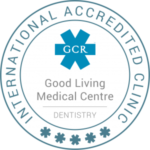Parkinson's Disease

Parkinson's Disease
Parkinson’s disease is one of the diseases of the central nervous system that affects the nerves of the body. It is a progressive disorder affecting the parts of the body controlled by nerves. The main fact for this disease is that the early signs of the disease are mild and mostly go unnoticed. Tremor in hand is the most common symptom that can be noticed in these patients.
Causes
Parkinson’s disease occurs when the certain nerve cells called neurons breakdown gradually or die. These neurons are responsible for production of a chemical messenger called dopamine. As a result of breakdown of neurons, the level of the dopamine decreases which leads to atypical activity of the brain in turn causes slowing of movements, tremor and other symptoms of Parkinson’s disease. The other causes of this disease are
- Genetic: Certain genes are known to increase the risk for Parkinson s disease. Having a close relative with Parkinson’s disease can also be a causative factor.
- Chemical exposure: Prolong exposure to Pesticides, herbicides may increase the risk for Parkinson’s disease.
- Environmental triggers: Certain pollutants or toxins are also a triggering factor Parkinson’s disease.
Symptoms
Parkinson’s disease occurs mostly in middle or later life and rarely in young age. The incidence of this disease occurrence is around the age of 60 or above. The risk of this disease increases with age. Men are mostly likely to get this disease when compared to women. The symptoms of this disease usually begin on one side of the body and become worse on that side, later it affects the other side of the body. The earlier mild symptoms usually go unnoticed. The main symptoms of this disease are:
- Tremor: tremor or rhythmic shaking is the most common symptoms one may notice in these patients. Tremor is mostly begins in hands or fingers.one may rub the thumb and forefinger back and forth which is known as Pin rolling tremor. The shaking usually slows while doing any activity or tasks.
- Slowed movements: as a result of decreased dopamine levels, the body movements slow down. The patients experience difficulty in walking such as their steps would have become shorter when they walk. They face difficulty while getting up from chair or bed. Their daily tasks would have become difficult for them to do and time consuming.
- Muscle stiffness: This can occur in any part of the body that causes pain and limit body movement.
- Slurred speech: Their speech would have become soft, monotone and mostly hesitate to speak.
- Experience difficulty in writing and other tasks.
- Loss of posture
- Impaired automatic movements like blinking eyes, smiling and swingling the arms while walking.
Treatment:
It is a fact that this disease cannot be cured completely but the symptoms can be reduced by proper treatment. The treatment involves complete assessment by a physician or a neurologist and then physiotherapy for movements and pain. The physician will prescribe medicines after investigations like blood samples and certain scan and tests. The physician will also direct you to physiotherapist to treat the stiffness, limited movements and pain of the muscles. Alternative medicines like homeopathy medicines also known to reduce the symptoms of this disease.




